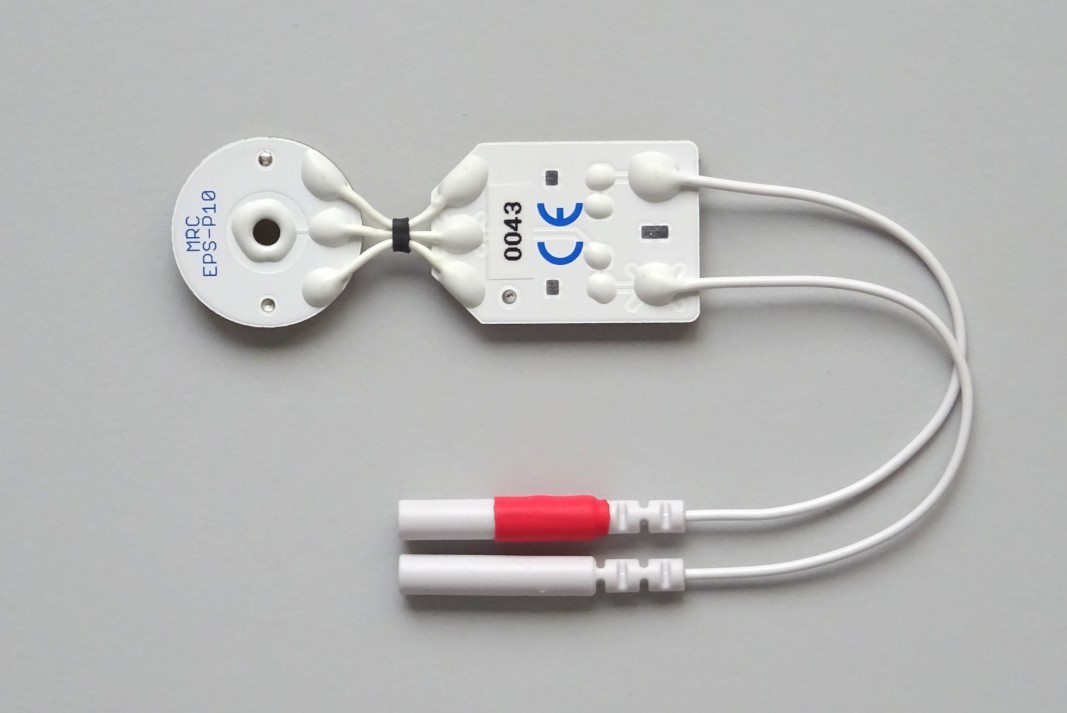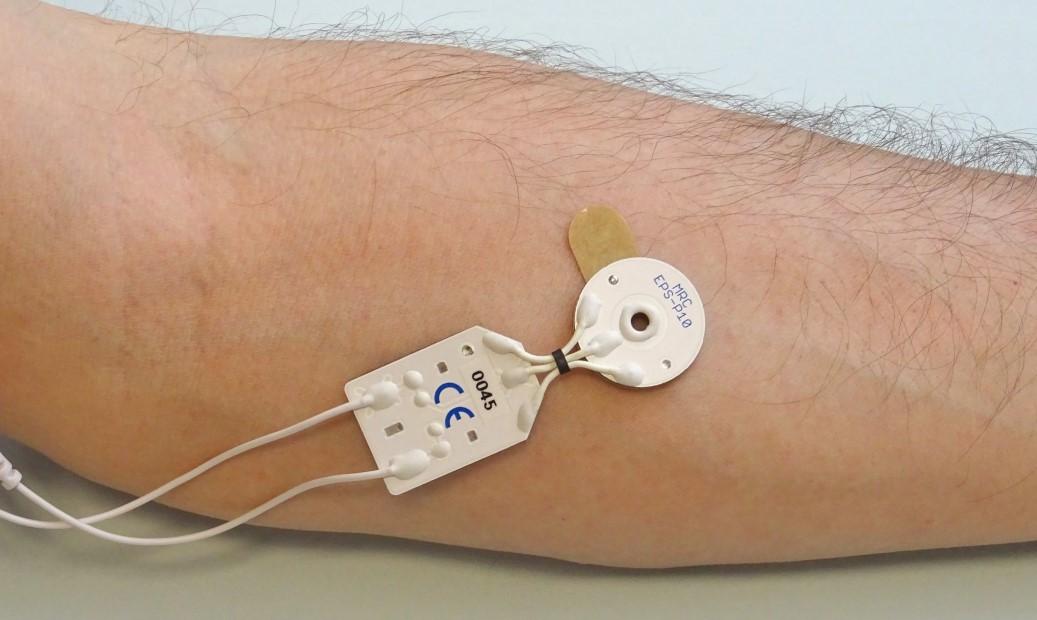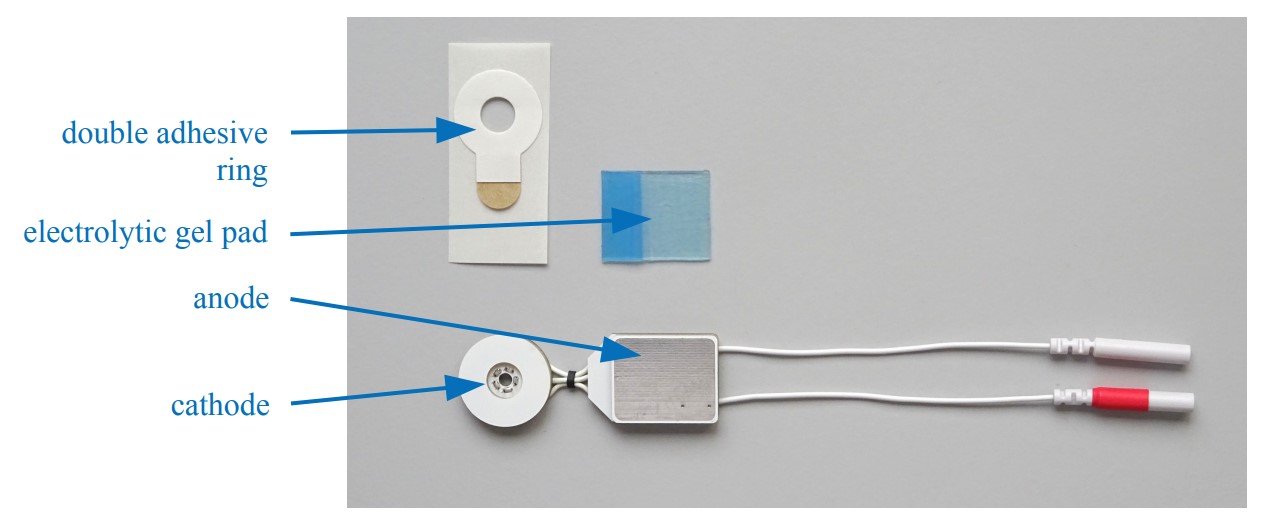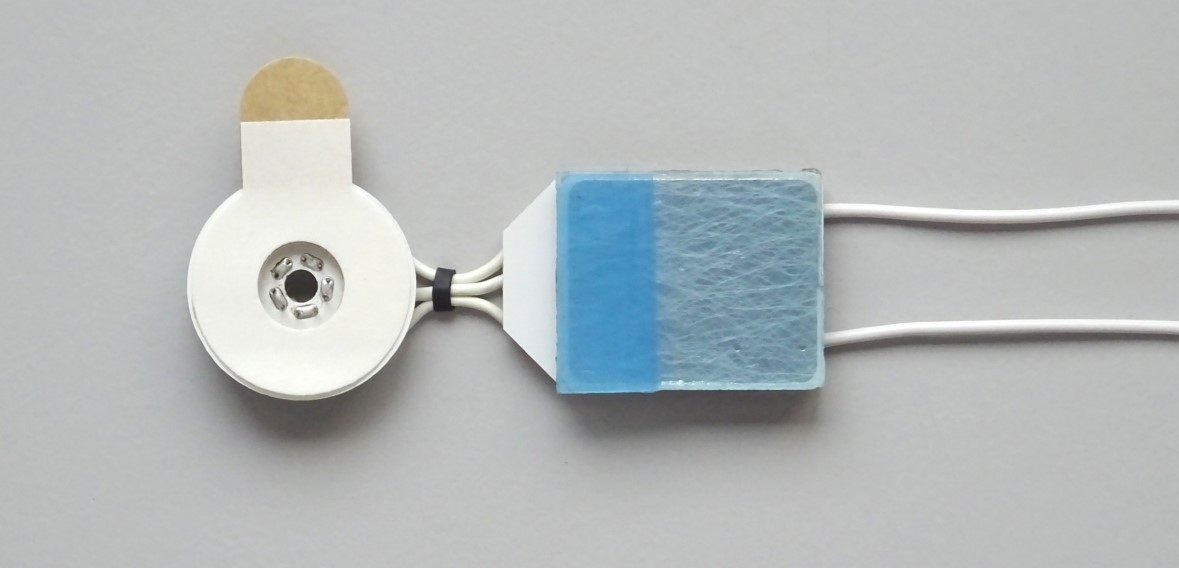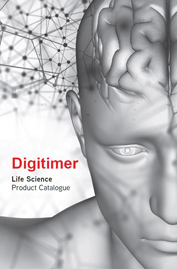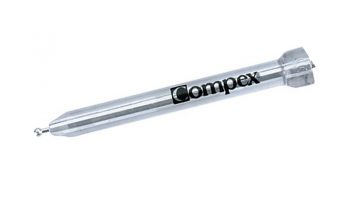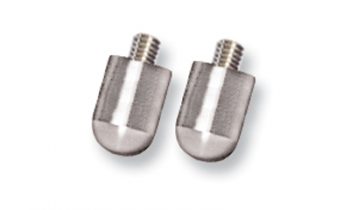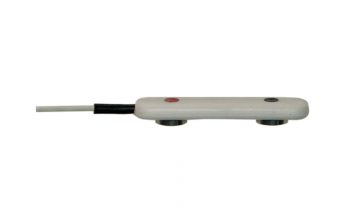Description
DESCRIPTION
The stimulation electrode “EPS-P10” is used to deliver current pulses from an external source through the skin to a subject. Applications include the determination of perception or pain thresholds for an electrical stimulus.
Another application is to evoke secondary hyperalgesia. This hyperalgesia can last for several hours and can be used to simulate chronic hypersensitivity in healthy subjects. In order to evoke the hyperalgesia repeated current pulses with intensities above the pain threshold of the subject can be delivered to the skin.
The EPS-10P electrode is commonly used with the Digitimer DS7A High Voltage Constant Current Stimulator, but is also compatible with other electrical stimulators within our range.
The cathode of the “EPS-P10” consists of ten thin pins made of tungsten with a defined diameter of 0.25mm. The anode is used for the safe discharge of the current. Thus, even at low current intensities, the necessary current densities for the excitation of free nerve endings of Aδ and C fibres in the skin can be achieved. The anode and cathode of the “EPS-P10” are mechanically connected. Due to the highly flexible cables, the electrode can be easily placed at variable positions. The EPS-P10 electrode is used at various centres in the European research project IMI-PainCare.
The EPS-10P electrode is supplied with a small pack of disposable electrolytic pads (anode) and double adhesive rings used to attach the cathode to the skin. Further packs of these consumable items may be purchased from Digitimer. Stimulator connection is via adaptor leads fitted with 4mm plugs.
For MRI users, a special MRI-compatible version of the EPS-P10 is available (EPS-P10-MRT), which features a 10m long shielded connector cable and is free of ferromagnetic material.
GALLERY
PUBLICATIONS
Klein T, Magerl W, Hopf HC, Sandkühler J, Treede RD: Perceptual Correlates of Nociceptive Long-Term Potentiation and Long-Term Depression in Humans. JNeurosci (2004) (Weblink)
Leone C, Di Lionardo A, Di Pietro G, Di Stefano G, Falco P, Blockeel AJ, Caspani O, Garcia-Larrea L, Mouraux A, Phillips KG, Treede RD, Truini A: How different experimental models of secondary hyperalgesia change the nociceptive flexion reflex. Clinical Neurophysiology (2021)
Manresa JB, Andersen OK, Mouraux A, van den Broeke EN: High frequency electrical stimulation induces a long-lasting enhancement of event-related potentials but does not change the perception elicited by intra-epidermal electrical stimuli delivered to the area of increased mechanical pinprick sensitivity. PLOS ONE (2018) (Weblink)
Nochi Z, Pia H, Pelz B, Götz M, Höink JN, Kostenko A, Wittayer M, Caspani O, Treede RD, Tankisi H, Finnerup NB: Edit Investigation of Potential Effects of High Frequency Electrical Stimulation on Small Sensory Fibers using Perception Threshold Tracking. Conference Paper on IASP World Congress on Pain (2020).
Pia H, Nochi Z, Pelz B, Götz M, Höink JN, Treede RD, Finnerup NB, Tankisi H: Perception threshold tracking (PTT) – A novel method to assess the small fiber function. Conference Paper on IASP World Congress on Pain (2020).
van den Broeke EN, Mouraux A: High-frequency electrical stimulation of the human skin induces heterotopical mechanical hyperalgesia, heat hyperalgesia, and enhanced responses to nonnociceptive vibrotactile input. J Neurophysiol (2014) (Weblink)
